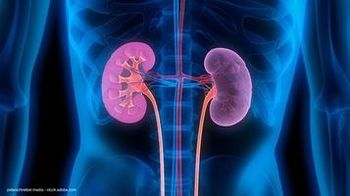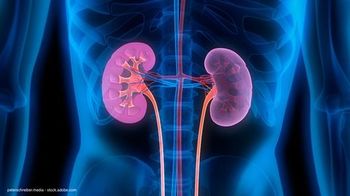
E coli urinary isolates likely multi-drug resistant
Washington--Outpatient urinary isolates of Escherichia coli that exhibit resistance to a fluoroquinolone antibiotic are likely to be resistant to multiple classes of antibiotics, results of a large North American laboratory study suggest.
Washington-Outpatient urinary isolates of Escherichia coli that exhibit resistance to a fluoroquinolone antibiotic are likely to be resistant to multiple classes of antibiotics, results of a large North American laboratory study suggest.
Most isolates that demonstrated resistance to ciprofloxacin (Cipro, Proquin) also were resistant to ampicillin (Principen) and to trimethoprim-sulfamethoxazole (TMP-SMZ [Bactrim, Cotrim, Septra, et al]); however, clinicians can still turn to nitrofurantoin (Macrobid, Macrodantin) or the intravenous carbapenem ertapenem (Invanz), which demonstrated good activity against multi-drug-resistant isolates.
"This study shows that if you know that an isolate is resistant to a quinolone, it is extremely likely that it will be concomitantly resistant to a penicillin and to a sulfonamide, and also, in some cases, resistant to nitrofurantoin," said George G. Zhanel, PharmD, PhD, professor of medical microbiology/infectious diseases at the University of Manitoba in Winnipeg.
Antibiotic resistance among outpatient urinary isolates of E coli is increasing worldwide, Dr. Zhanel and his colleagues noted in a presentation at the Interscience Conference on Antimicrobial Agents and Chemotherapy here. In an effort to characterize the resistance problem, investigators evaluated 1,742 outpatient urinary isolates of E coli provided by 30 medical centers in the United States and 10 in Canada.
Broad-spectrum resistance
All of the isolates had proven resistance to a fluoroquinolone, defined by a ciprofloxacin minimum inhibitory concentration (MIC) of ≥4 µg/mL. Each isolate was tested for susceptibility to a panel of commonly used antibiotics, including ampicillin, cefdinir (Omnicef), ertapenem, nitrofurantoin, and TMP-SMZ.
The MIC cutoffs to define resistance for the agents were ≥32 µg/mL for ampicillin, ≥4 µg/mL for cefdinir, ≥8 µg/mL for ertapenem, ≥128 µg/mL for nitrofurantoin, and ≥4 µg/mL for TMP-SMZ.
The analysis showed that almost 80% of the quinolone-resistant isolates also were resistant to ampicillin and 67% were resistant to TMP-SMZ. In contrast, the resistance rate was 0% for ertapenem, 4% for nitrofurantoin, and 8.8% for cefdinir. Among 1,017 isolates that demonstrated concomitant resistance to ciprofloxacin, ampicillin, and TMP-SMZ, none were resistant to ertapenem, 4% were resistant to nitrofurantoin, and 9.4% were resistant to cefdinir.
The results indicate that treatment of urinary tract infections will become increasingly difficult as multi-drug-resistant E coli strains spread across North America. Additionally, the study indicates a need for judicious, appropriate use of fluoroquinolone antibiotics to minimize the spread of multi-drug-resistant urinary pathogens.
"Even though urinary isolates might be multi-drug-resistant, there still may be some hope in treating them with nitrofurantoin, in the case of a lower-tract infection such as cystitis, or there may be some hope in treating them with an intravenous carbapenem like ertapenem," Dr. Zhanel said.
"An intravenous antibiotic might not be so convenient in an outpatient setting," he continued. "There are some new oral carbapenems that are being worked on, so there might be some future hope to treat these multi-drug-resistant pathogens with carbapenems in the outpatient setting."
Newsletter
Stay current with the latest urology news and practice-changing insights — sign up now for the essential updates every urologist needs.


















